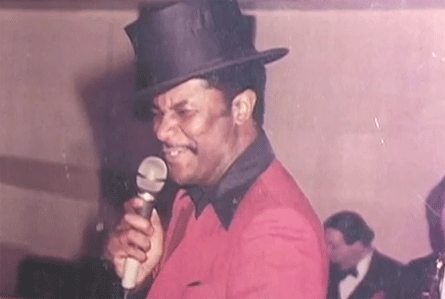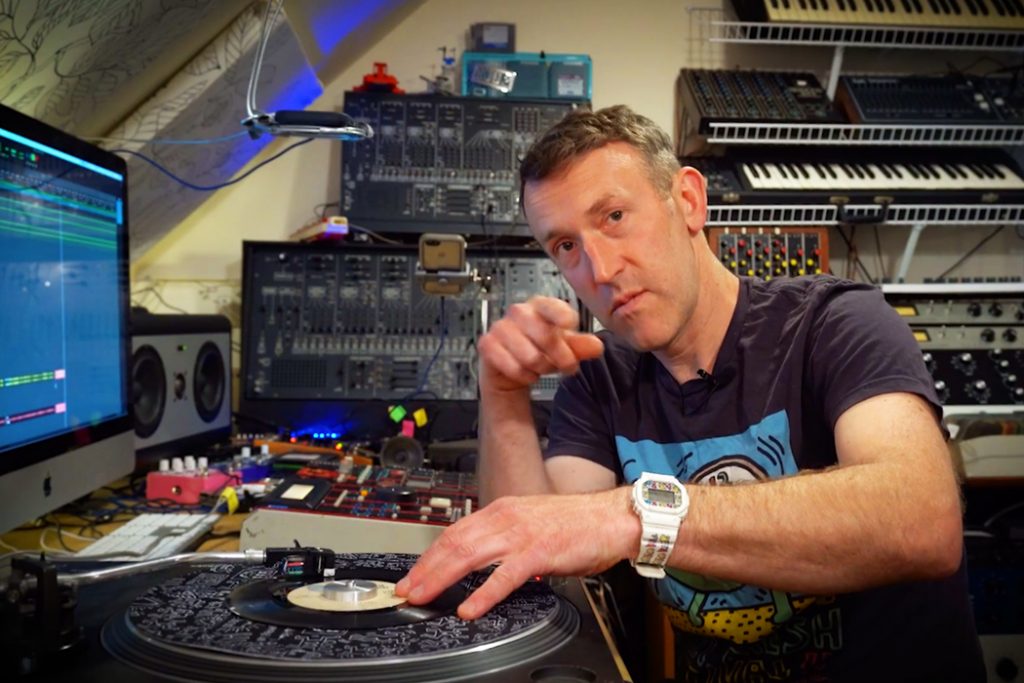+ Create and arrange original, instrumental hip-hop music from sampling pioneer RJD2 in his Soundfly course, RJD2: From Samples to Songs.
Like so many popular styles of music today, soul music and its many sub-genres were birthed and shaped by Black American musicians, blending gospel and R&B music with deep grooves and harmony, starting in the 1950s.
From Motown to the modern-day, the influence of this style is everywhere, and its impact on the hip-hop community through the inspiring artists and the wealth of sample-worthy material they created is enormous.
Whether it’s a predominantly sample-based record like Deadringer or an album made mostly with live instrumentation like The Fun Ones, you can clearly hear the influence soul music has had on RJD2’s sound, especially the era from the late 1960s to the late 1970s.
While soul music as a genre encompasses so many things that it can be a little difficult to pin down, this era is defined by the sounds of artists like Curtis Mayfield & the Impressions, the Delphonics, and the O’Jays, funk music by James Brown, Isaac Hayes, and Bobby Womack, and countless others.
Let’s get a better sense of what RJ is drawing from by diving into a track from that era: “Synthetic Substitution” from Melvin Bliss.
Melvin Bliss (born Melvin McClelland) was a relatively obscure soul singer in the early ’70s with one notable release. The A-side was called “Reward,” an R&B track written and produced by Herb Rooney of The Exciters and released in 1973 on Sunburst Records.
Unfortunately, Sunburst Records closed down before the track could see much radio play, but it was the B-side to that track that went on to have a distinguished afterlife among beat makers and hip-hop producers.

First used in 1986 on the Ultramagnetic MCs’ track “Ego Trippin’,” “Synthetic Substitution” has been sampled well over 300 times, from artists as diverse as Naughty By Nature, Kanye West, Wu-Tang Clan, and others.
Let’s take a deeper look at the song, including some of the defining features of the music of this era and why it’s such fertile ground for producers.

*Note: If you want to go deeper on the history of hip-hop and its culture of sampling and production, check out our course The Art of Hip-Hop Production.
The Players
It wasn’t unusual for sessions in this era to feature heavyweight musicians that have gone on to be regarded as legends on their instruments. One of the things RJD2 talks about throughout his course is how as you spend more time digging through records you begin to know these players, which can help you find what you’re looking for more quickly.
This track features the iconic drummer Bernard Purdie, who recorded with James Brown and Aretha Franklin. It also provides our first opportunity to snag a loop:
That’s the drum break that opens up the track and has gone on to provide the incredibly funky groove on some massive hits.
Like many soul beats, it’s got the snare on what’s called the backbeat (beats 2 and 4 of the measure), with the kick drum playing the downbeat of the measure and some other kicks on the off-beats. It also has a syncopated open hi-hat every other measure to provide a little extra energy.
Syncopation, or playing notes on the off-beats, is an important feature of a ton of soul and funk music rhythms.
+ Learn more on Soundfly: Learn the fundamentals of a great funk groove and how to adapt them to create better beats and bass lines in your music in our free course, Writing Funk Grooves for Drums and Bass.
The Instrumentation
After two bars of drums, the bass and keys enter to provide another very loopable sample:
The instrumentation on this song is fairly simple: keys, bass, drums, and what sounds like a clavinet. You can almost feel the notes from the bass and keys leap out of your speakers.
The groove is locked in between this riff and Purdie’s drums, which repeat throughout the track, while the clavinet provides a little bit of a psychedelic element, which became more common in the ’70s.
The Harmony
The influence of jazz harmony is incredibly prevalent in most genres of soul music. We talk later on in the course about how it can be useful as a sampling artist to be aware of harmony in order to make samples with chords or harmonies in them work together.
In “Synthetic Substitution,” most of the song is fairly simple, developing over the top of a repetitive D minor pentatonic riff played by the bass and keys. We also get a very lush sounding Dmin9 chord on the fourth beat of each measure of this loop:
As a bonus, we also get the same riff a little later in the track but this time with the ride cymbal opening things up:
The pre-chorus and chorus (e.g., “You’re the only thing that’s real in my life”) introduces a more complex chord progression, using some extended harmony and a bit more movement to add some sophistication.
Compelling riffs and jazz influenced harmony are definitely common ingredients of many eras of soul music.
The Mix
The sound of a lot of soul records in the Motown era came from a few different factors. To start, most of the bands on these records were recorded in smaller rooms than you’d probably expect, creating the opportunity for mic bleed and a true “live-band” feel. Drums were tracked in mono, and mics were often recorded through tube preamps, providing lots of character and warmth.
The entire bands’ mics were sub-grouped on the console and fed over to 8-track tape recorders. Modern sessions are way more isolated, and we can track as many channels as our interfaces allow.
Remember how limitations often lead to more creative results? The early eras of soul music were a prime example of that in action. “Synthetic Substitution” sounds like it has many of those same calling cards in its mix.
Nowadays, you add a plug-in to a return or even an individual track if you want reverb. Soul music of the ’60s and ’70s often utilized echo chambers — rooms that contained a loudspeaker with a mic on the other side to create reverberant spaces that could be used to add depth to the recordings. Plate reverbs definitely played a role as well, like the EMT-140, and tape delays were commonly used to get that classic slapback sound.
At the end of the day, much of the soul sound really comes from those bands performing at the highest level. Mic bleed isn’t that big of an issue if everyone’s killing their parts.
Ready for even more?
Check out Soundfly’s variety of courses on songwriting, mixing, beat making, recording, composing, and more, led by artists like Kimbra, Com Truise, Jlin, Kiefer, The Pocket Queen, and RJD2: From Samples to Songs.




